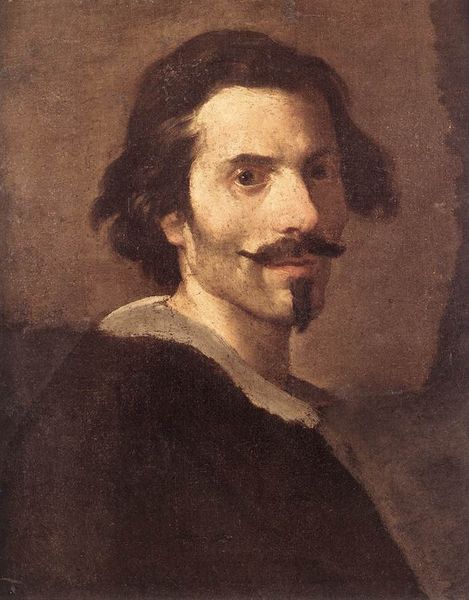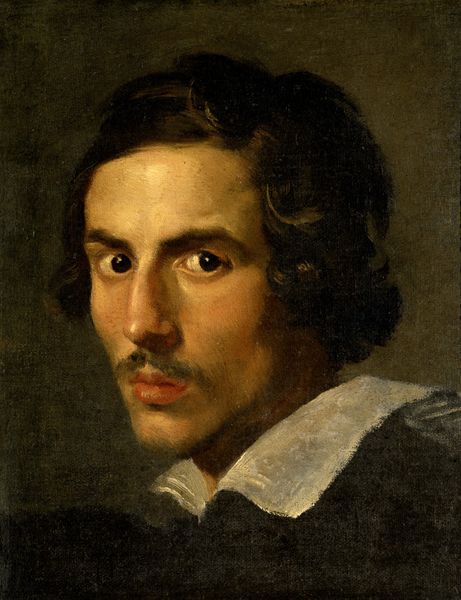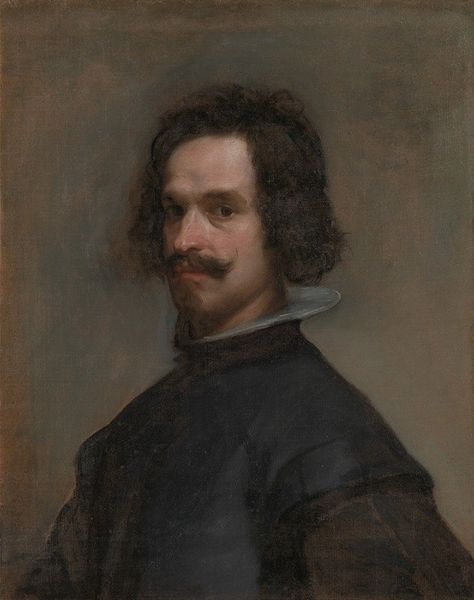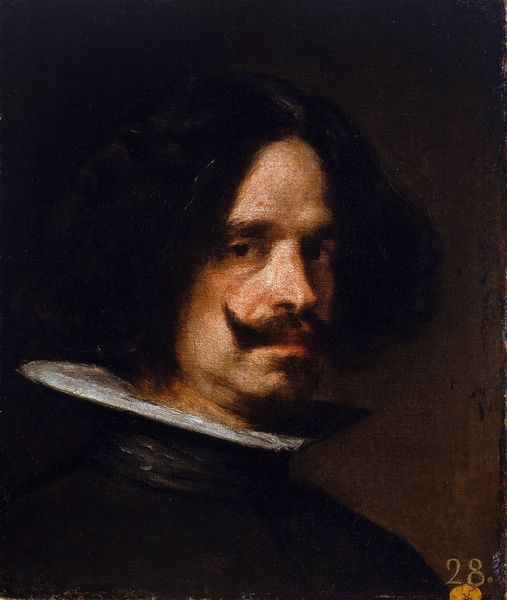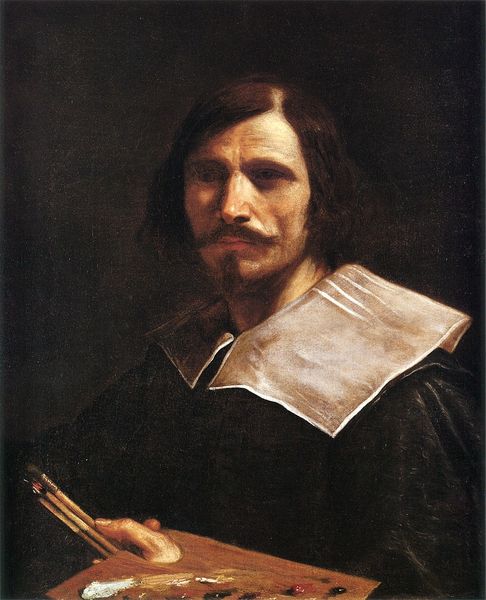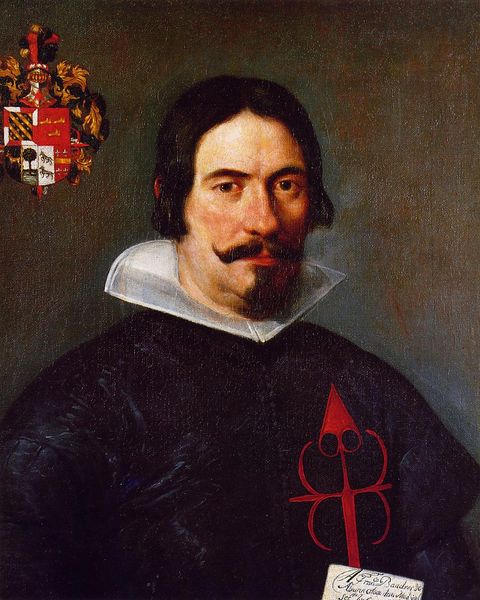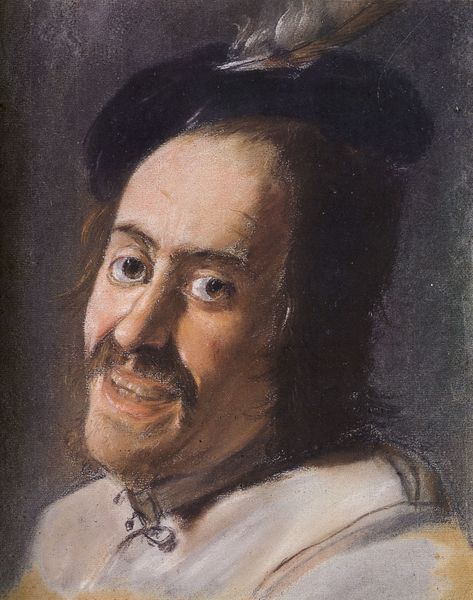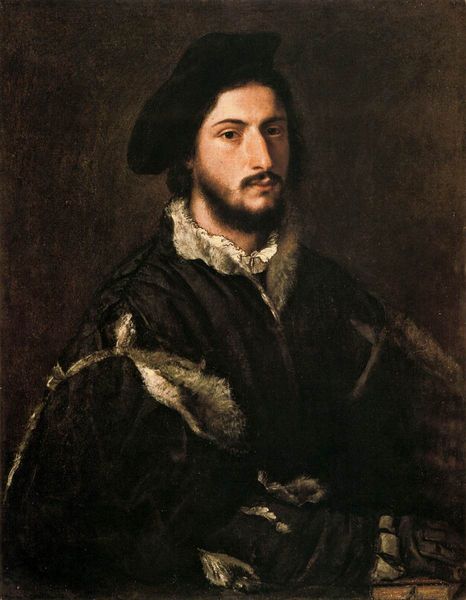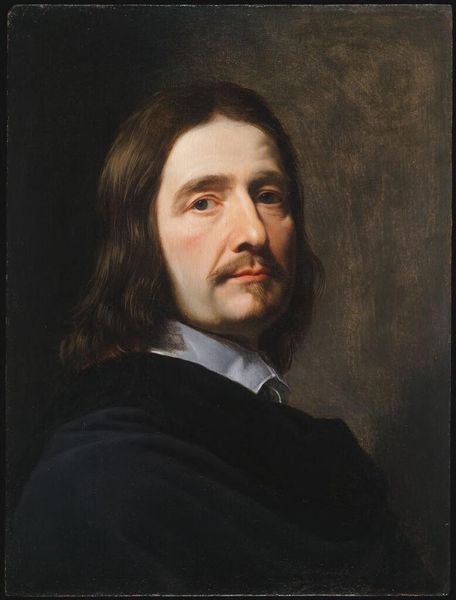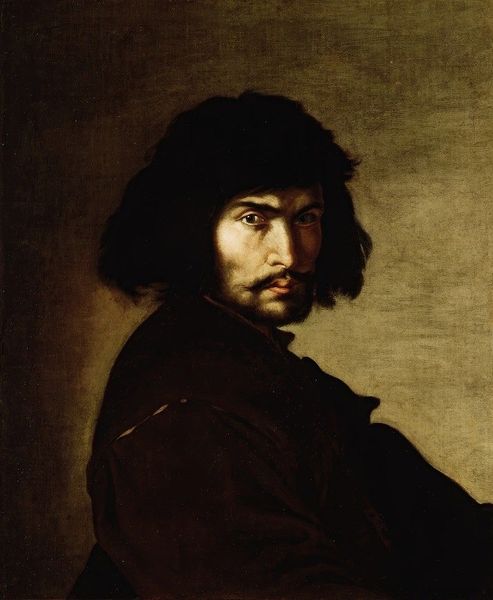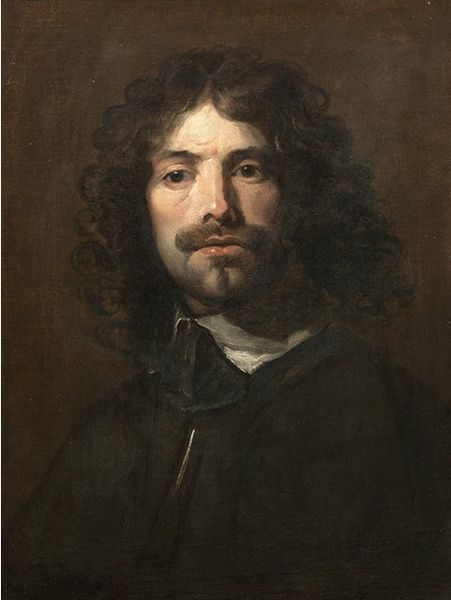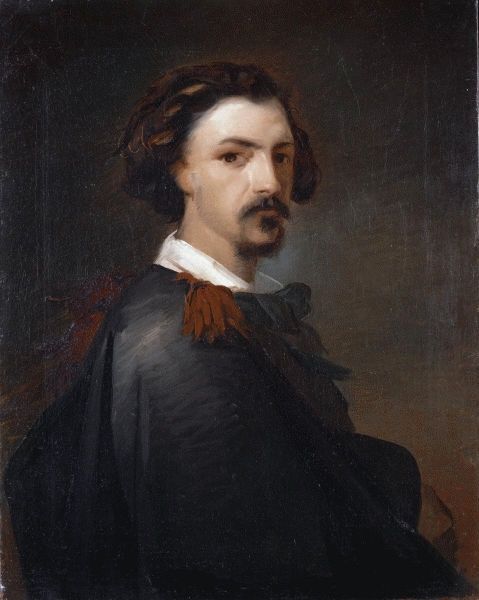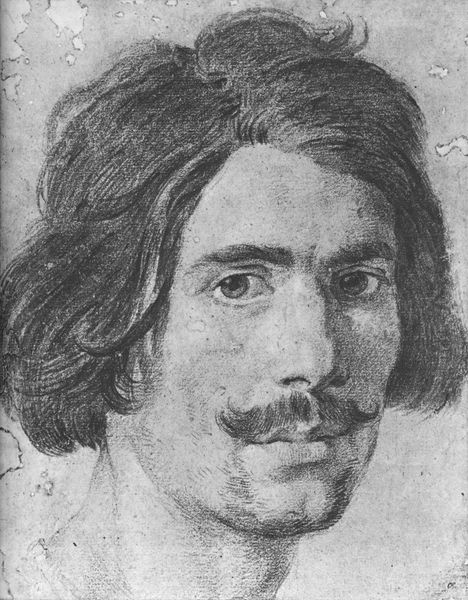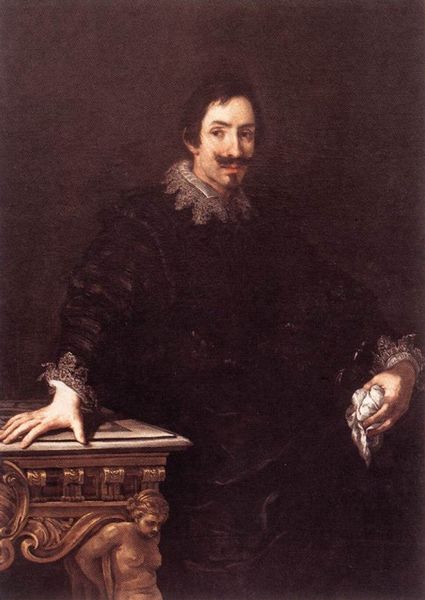
painting, oil-paint
#
portrait
#
self-portrait
#
baroque
#
painting
#
oil-paint
Dimensions: 62 x 46 cm
Copyright: Public domain
Curator: We’re now in front of Gian Lorenzo Bernini's “Self-Portrait,” painted in 1635 and housed here in the Uffizi. Editor: The gaze is strikingly direct, isn't it? It immediately conveys a sense of self-assuredness, maybe even a touch of the theatrical. I'm interested in the lack of vibrant colour and muted palette of primarily dark tones which gives the portrait its overall mood and affects my perception of Bernini's intent to present a certain impression of himself to the world. Curator: Absolutely. Considering it's a Baroque portrait, Bernini forgoes a lot of the ostentatious display of wealth, choosing instead to focus on the psychological intensity. Notice how the light catches his face, sculpting his features. It’s almost like he’s analyzing himself in real time. This contrast draws the eye to his eyes. Editor: And yet, it's precisely this seeming lack of Baroque excess that reveals something crucial about its creation. He employs an impasto technique with quick brushstrokes that are not readily smoothed over—we are seeing how the very act of applying pigment to canvas helps craft an image. Curator: Indeed, that ruggedness adds to its immediacy. His facial expression conveys confidence. This is where formalism aligns; the very composition itself amplifies psychological dimensions. Editor: Right, and let’s think more critically about those raw materials themselves – where they came from, how they were processed. The cost of pigment, canvas – labor and materials combined dictated a certain level of exclusivity in creating art at this scale in Bernini's historical and cultural setting, therefore Bernini held high status to produce artwork and particularly self portraits. Curator: Interesting observation, this raises valid points that extend beyond a conventional reading. Even a “self-portrait” reflects broader socioeconomic relationships. The stark gaze holds complex layers now. Editor: Precisely. Considering materials allows us a far richer view of Bernini's work – not just as skilled representation, but as a crafted product intrinsically woven into a wider web of cultural circumstances that impacted Baroque Rome during 1635. Curator: Well, approaching through this new lens really changes my appreciation for this particular Bernini. Editor: I think understanding the work of this oil painting extends so much further once it is considered through the complex production of the oil on the canvas in tandem.
Comments
No comments
Be the first to comment and join the conversation on the ultimate creative platform.
